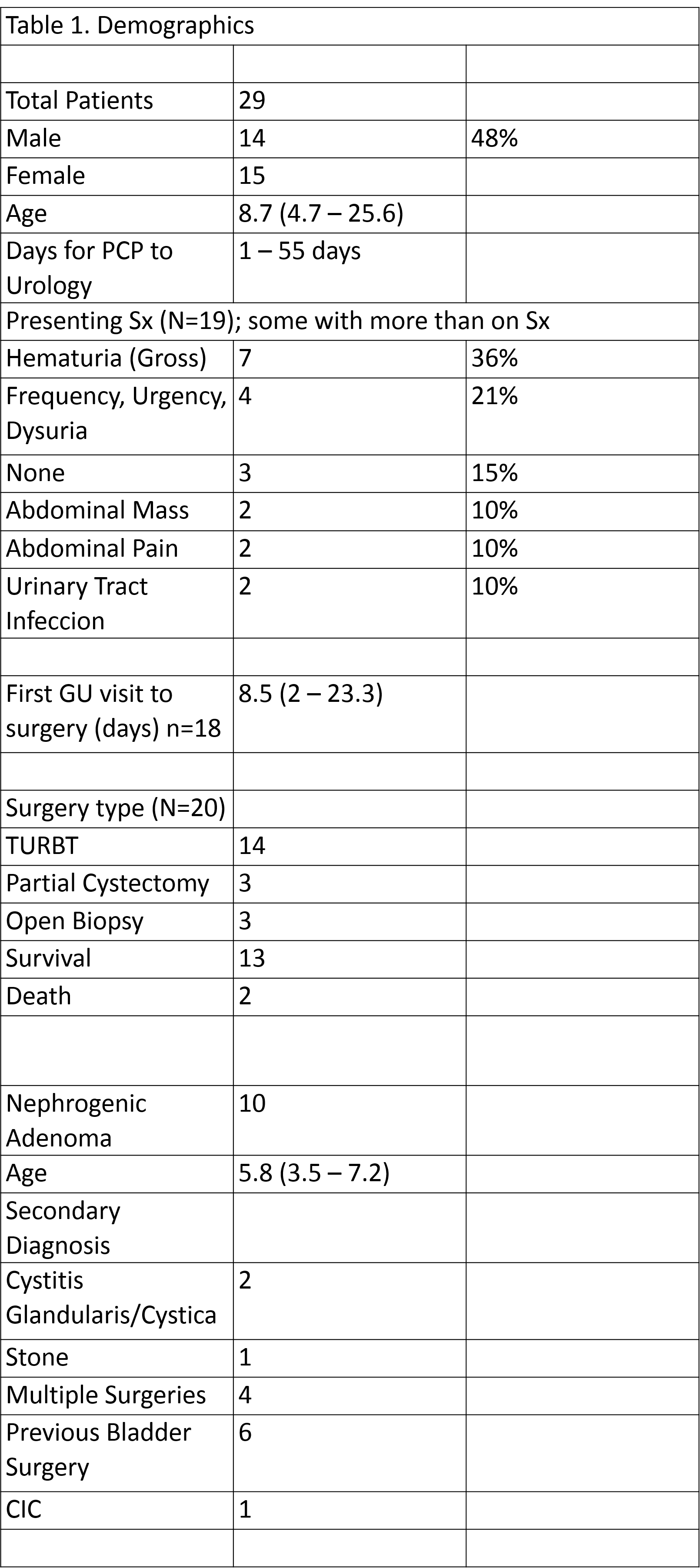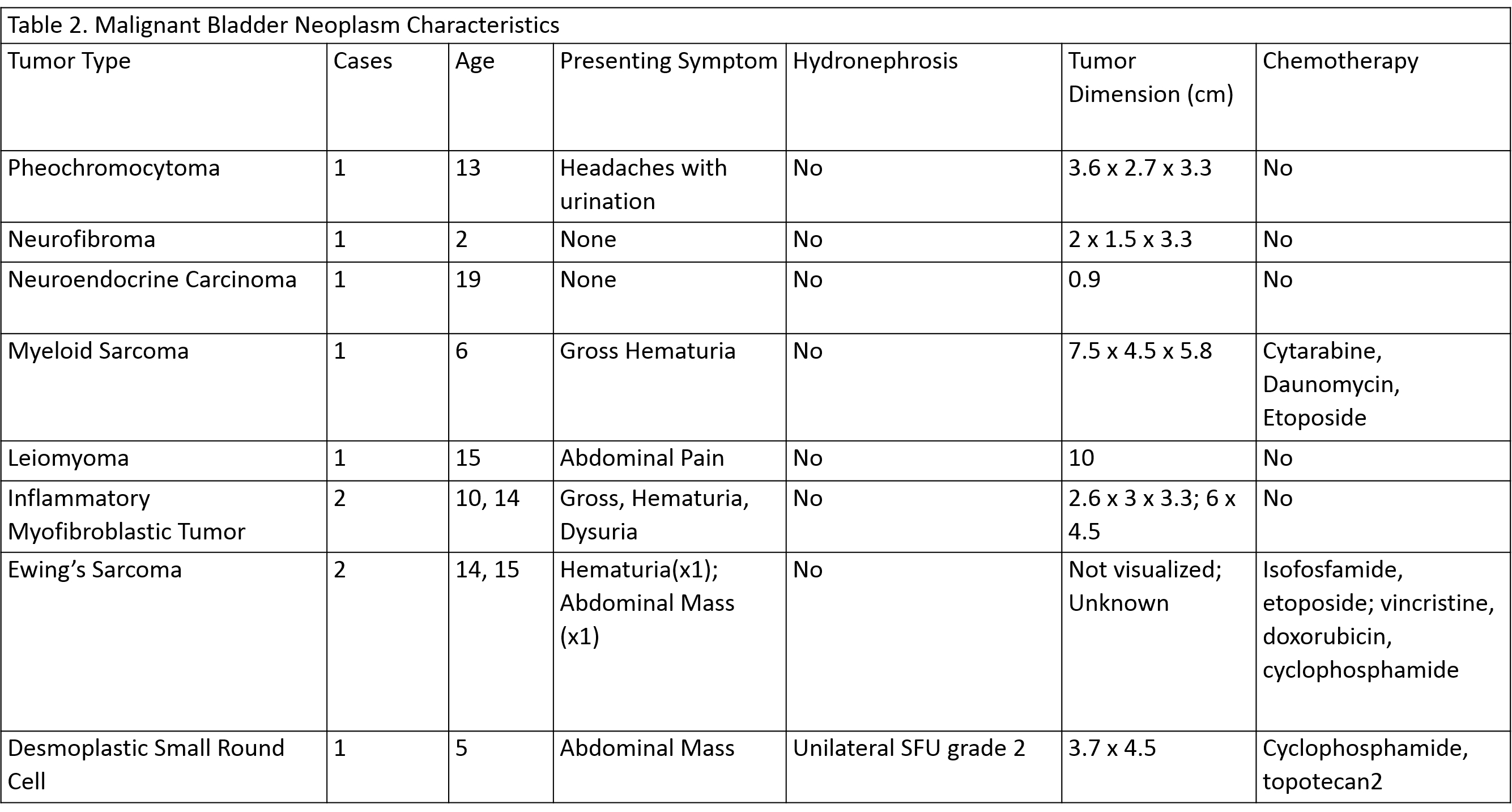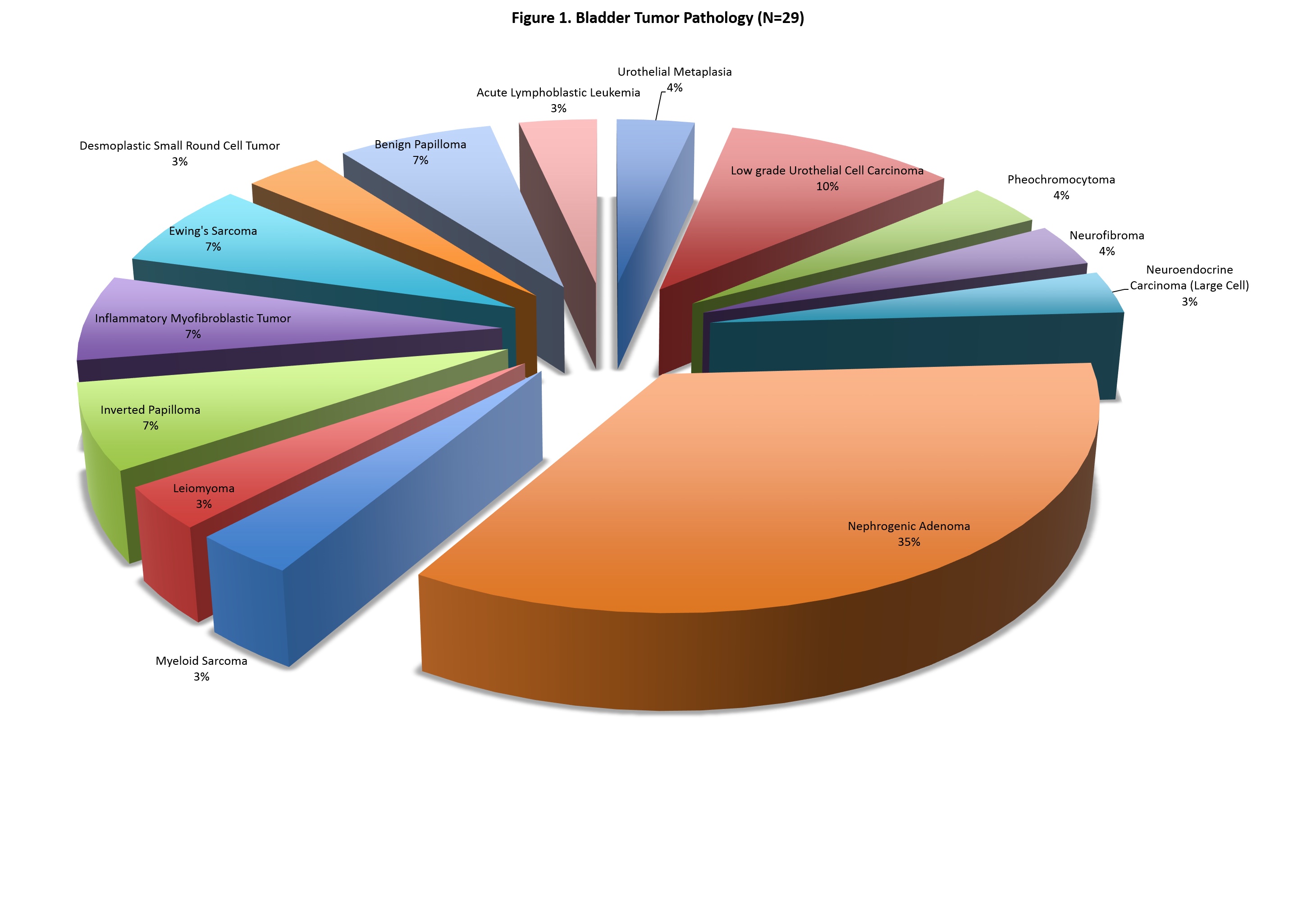A single institution review of Non-Rhabdomyosarcoma Pediatric Bladder Tumors
Jason K. Au, MD, Rodolfo A. Elizondo, MD, Duong T. Tu, MD.
Texas Childrens Hospital, Houston, TX, USA.
BACKGROUND:
Although much has been described in the literature regarding pediatric bladder rhabdomyosarcoma(RMS), very little is known regarding non- rhabdomysarcoma bladder tumors. We present our series of non-RMS pediatric bladder tumors.
METHODS:
A retrospective review (1980-2015) was performed looking at primary bladder tumors excluding RMS in children under 20. Demographic data, pathologic tumor characteristics, and survival status was extracted. A descriptive analysis of different pathologic entities is presented.
RESULTS:
Twenty nine children met inclusion criteria of which 14 were male. Median age was 8.7 (4.7-15.6) years. Most common presenting symptoms were gross hematuria (36.8%), frequency/urgency/dysuria (21.0%), no symptoms (15.7%), abdominal mass (10.5%), abdominal pain (10.5%), and UTI (10.5%). Malignant pathologies accounted for 31.0% and benign pathologies 69.0% (Fig 1). Initial surgeries included: transurethral resection of bladder tumor (14), partial cystectomy (3), open biopsy (3). All but two patients survived. Nephrogenic adenoma (NA) (n=10) was the most common benign pathology and presented at a median age of 5.8 (3.5-7.2). Associated risk factors for NA include previous bladder surgery (6), intermittent catheterization (1), and bladder stone (1). Four NA patients needed multiple transurethral resections (median 4). Other pathologic entities are summarized in Fig 2. Median age of malignant versus benign pathology was 15.9 (6.8-16.5) and 7.2 years (3.8- 14.1) respectively (p=0.064).
CONCLUSIONS:
Benign non-RMS pediatric bladder tumors present earlier than malignant entities. Persistent gross hematuria, lower urinary tract symptoms, and urinary tract infections may warrant urologic evaluation, as they may be associated with pediatric bladder tumors. 


Back to 2016 Fall Congress
